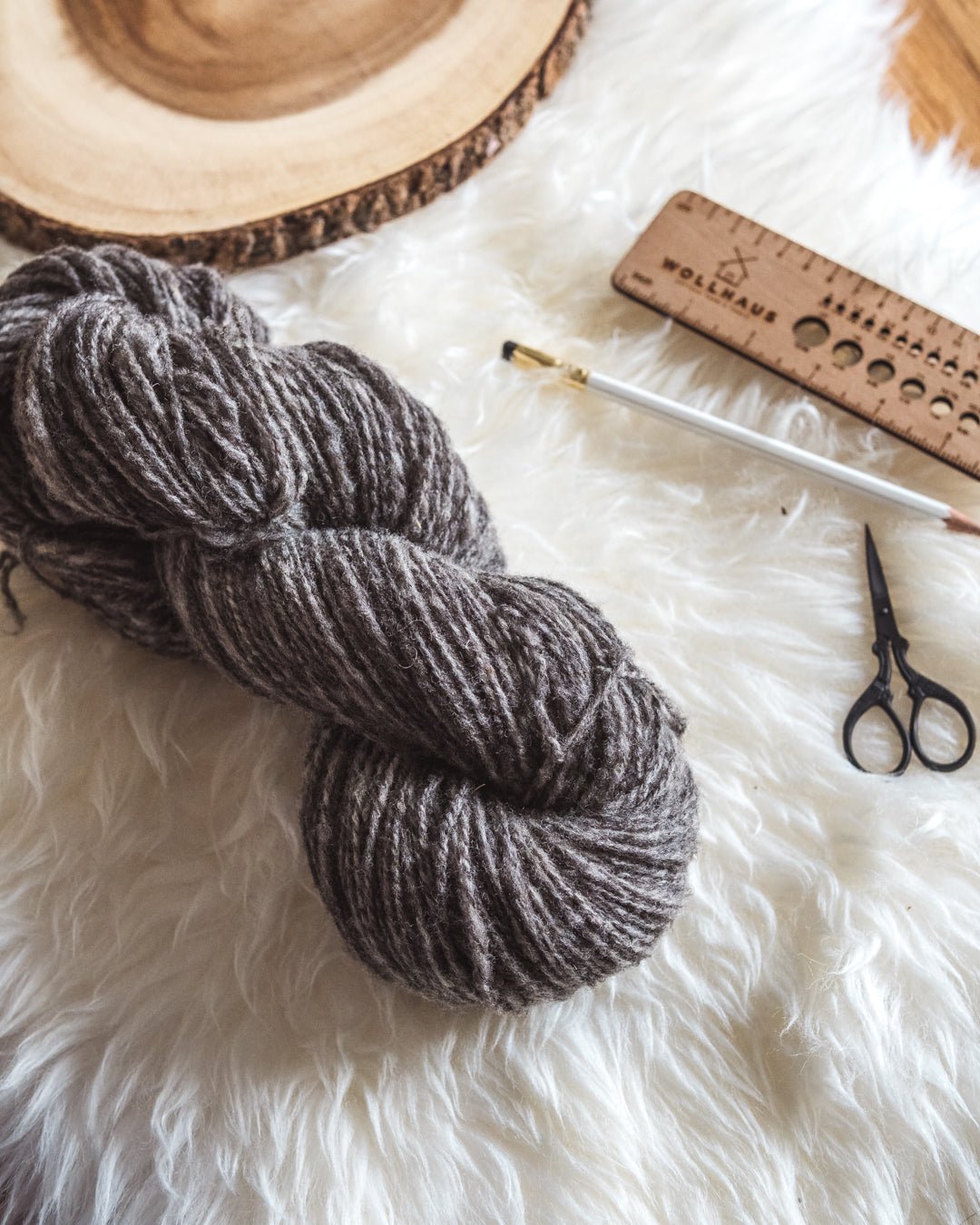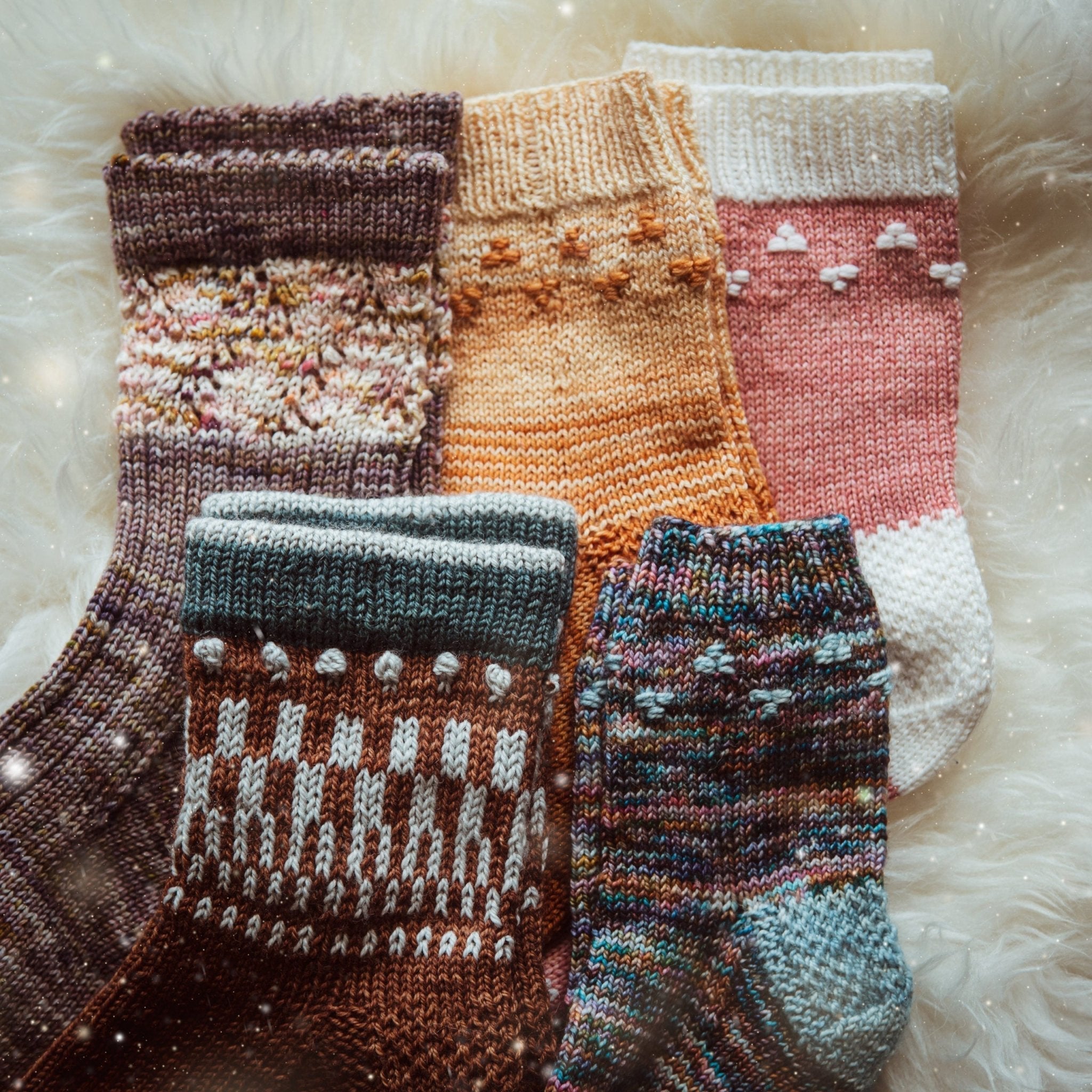
Choosing fibers that align with your values AND project
(Part 1 of 2)
Disclaimer: A gentle reminder that this post is here for those who want to take sustainability into consideration for their craft, which is not a requirement for someone to be a beloved and wonderful part of our community. Please don't use this information to gatekeep. We don’t do yarn snobbery around here, and different people can make their own choices for craft as needed without being shamed here!
Welcome back readers to another round of value-aligned knitting! Today we’re going to discuss how we choose yarns that suit our project and our sustainable values.
Climate Justice is a Racial Justice Problem
You might wonder.. why is a Knit Diverse blog tackling sustainability, of all things? Sustainability is a topic that is hugely important in anti-racism work. The very history of colonialism and slavery is the history of extracting land, labor, and resources from a place or a people until there’s nothing left to extract. The climate justice movement must be a racial justice movement. We cannot separate these things from one another.
The Global North is responsible for a staggering 92% of excess emission, and yet those living in the Global South, which has a much lower per capita rate of emission, will suffer disproportionately. Studies show that people of color, particularly Black and Indigenous people, will be particularly impacted.
For some reason, any time I see this conversation, I mostly see writing about sustainable manufacturing processes, but not life cycle assessments to show how a sustainable knitting life really would look like. This is a capitalist viewpoint and many times conversations about sustainability are steeped in racism, classism, and is generally exclusive. This is an attempt at giving a more well rounded overview into changing our knitting habits to be more sustainable.
What is a Life Cycle Assessment?
Sustainability is a broad topic that requires a lot of studies for us to fully understand our impact on our planet. Many of these studies are being done, but there isn’t a super complete picture of every detail… yet. In our specific fiber world, there are a thousand and one factors that affect how sustainable any given project can be.
I want to preface this by saying that it is super important that when you are choosing yarns, you consider a myriad of metrics to assess whether it will suit the project you are planning, and whether you can use yarn that you already have and reduce the amount of new material you are purchasing.
Three of the big measures for sustainability of any given material are
1) What did it cost in carbon output to create this material from beginning to end? This includes anything from the impact of growing a fiber in soil (even if it’s an animal fiber–which requires plant feed to make), crop yield per acre, the carbon footprint of the life of the animal, the impact of picking, sorting, and washing the fiber, the energy, water, and chemical use and waste during carding, combing, spinning, dyeing, and rinsing, as well as the greenhouse gasses emitted in the process, and finally, probably the most under-counted, the carbon cost of transporting the product from step to step in the process and finally to the store, and the end user.
2) The use case of the material over the course of a lifetime before it becomes trash in the landfill.
3) How it is disposed of at the end of the life cycle. Is it composted and returning to the environment? Is it recycled? Or is it crushed in a landfill at such density that it will pretty much never degrade?
These three factors, assessed together, is what’s called a Life Cycle Assessment for any given material.
Why matching fiber to intended use is key to sustainable making.
The more you can maximize the lifetime of the material, the more you reduce any impact the fiber made in the creation of the fiber and the impact of however it’s disposed at the end. This might mean that the fiber that’s traveling to you from Peru might not be that much worse (from a carbon footprint standpoint) than the fiber that’s made in the USA beginning to end, after all, because the impact of transportation is a one-time impact, and will be spread throughout the lifetime use of the product. If you made something that was locally grown and milled, but then you never wore it because you don't love it or it isn't suitable for your daily life, then that isn't a more sustainable choice.
The most sustainable purchase, after all, is the one that you’ll love and use often, for the rest of your life. Yarn that costs water, time, fertilizer, feed, land, and human labor to create. I have to reiterate: knitting a 'sustainable' project you will not wear enough to offset its carbon emission cost is not a sustainable choice, even if the yarn you chose may have been ‘sustainably’ created.
This is why I'm always going on and on on my Instagram about caring for your knits, swatching, and just generally making sure you create a project you love and will wear for a long time.
A comparison with shopping bags.
There aren’t many excellent studies that include all of these metrics to compare different fibers against each other, but there are some that we can draw some idea. In this blog, I’ll be drawing mostly on a comparison of different materials that we use to make shopping bags.
You might be surprised to find that in a straight comparison of these metrics between plastic bags, paper bags, reusable plastic canvas bags, and reusable cotton totes, the results were not at all what you would expect. By some measures, plastic bags are a better option over the course of a lifetime than, say, a cotton tote, because a cotton tote costs so much for the environment to make, that over the lifetime of its use, you might need to use it 3x a week over the course of the next 45 years to compare to the same shopping trips using plastic bags! I know that I have not used a single cotton tote 7000 times. Have you?
However, there’s no good way to dispose of plastic, so if we look at the total lifetime use and disposal, the numbers change yet again… in ways that are really hard to measure reliably in a single study.
So, if we look at material only in fiber, over the lifetime of a product, acrylic might not be worse than wool or plant fibers, depending on each finished object’s use case, where it’s produced, and how it’s worked up… but again this choice will depend totally on your needs, which might include medical, cost, or access reasons for buying certain fibers over others.
Some of the things you might be considering are:
Consider: Seasonality
What climate do you live in? Do you need fibers that are a blend between wool and plant fibers to help regulate temperatures? Though untreated, non-superwash wool is a highly regulating fiber and many people can and do wear wool year round, in some climates this is not as feasible, and using a yarn that is partially or all plant fiber may be more suitable for your climate even if it’s a technically less sustainable fiber.
Consider: Transportation
If you live somewhere that doesn’t have good fiber access, how can you minimize the amount of carbon footprint in getting the yarn to yourself? You’d be surprised to know that in many cases, getting one thing delivered to you via a courier from a local store or warehouse is more sustainable than driving to the store for that one thing.. Unless you’re at the store for a lot of things, which offsets the emissions created, per thing purchased.
When I order my favorite yarn from Sweden, can I try to save up to make a bigger purchase for a number of planned projects, so that I don’t have to purchase as often? If I’m going to the yarn shop, can I make sure I make a complete list of all the things I need, or wait until I need a few things to go rather than going to purchase that one thing?
Consider: The Fabric
Does the yarn you’re about to use create a fabric that you will love and enjoy for the project you’re planning for it? This might differ from person to person, and depending on where you live and what is available or seasonally appropriate for you. But ideally you will have a fabric you love. Yes, that does mean swatching, and changing your plans for what you’re making with that yarn should the swatch not create the fabric you want for this project. Sorry!
Consider: Washability
Lots of environmentalists will poo-poo on superwash yarn, and for good reason. But look, those 3 felted baby sweaters I’ve got in my house that teddy bears are wearing are a lot less sustainable per wear (at least for a child) than the superwash ones that my kids wear a thousand times over.
One tricky aspect though, of acrylics and superwash yarn (which are coated in a polymer), is that they will shed microplastics in the wash which ends up in our rivers and oceans, and cannot be filtered out by our city filtering systems, and have a measurable impact on the environment. Textile produce a whopping 35% of microplastic pollution in the ocean!
Of course, you might say that switching to only “natural fibers” as a solution for microplastics in the ocean… but natural fiber actually also has its own problems, such as being water intensive to produce (cotton) or being difficult to assess for animal welfare (wool and others)! Finding a balance between use case and washing is a case by case kind of thing, in my opinion.
Consider: Durability
Are you someone who works in an office and probably won’t put much hard wear on your clothing? Or are you someone who works on a farm or are living your best homesteading life and things get rough? This will impact your knitting choices and you need to choose a yarn that is suitable for each use case! Maybe you are that farmer or homesteader but on the weekends you want a nice luxury sweater for a nice brunch? That’s totally fine too! Just make sure that in balance, you are choosing fibers and yarn constructions and knits that suit your lifestyle in a balanced way.
Consider: For Spoonies
God forbid that people ask those of us who are disabled to do more than everyone else when it comes to sustainability. I have mental illness, chronic pain, and migraines, but some days I can get the washing done. I know this isn’t the case for everyone, and I want to take a moment to discuss this.
Is the garment you are making meant to be next to skin? Can you wear that fiber next to skin? Can you afford the time and energy to care for it the way it’s meant to be cared for with the material you are considering? Sometimes the best choice for us to make sustainable garments or accessories might just be choosing the easiest care acrylic so that we can manage to care for it, keep it in good shape and love it for a long time, especially when we are ill.
Does it spark joy?
And of course... the most important part... does it spark joy? It is totally fine and great to knit for whatever reason you want to... but if you can manage to find something that you would love wearing that is within your financial ability... I bet you'll get lots of joy out of it!
For some, this might mean having a stash full of colorful things by hand dyers that they can choose from. For me, this means curating a small and carefully thought out stash so that I don't feel overwhelmed and every single item gives me joy. This will look different for everyone.
Conclusion
As you can see from these above considerations (and they are just a few of many) that might play into whether a yarn is sustainable for you. There’s no easy answer to all of this, and these different factors will all play out for us in very different ways, and thus there’s no ‘one right way’ to be sustainable in your knitting practice.
As I always say, I am here to give you a framework on how to make your own choices… not tell you what choice to make!
My next post will be a deep dive into the relative sustainability of common fibers used in knitting and how they are made. We’ll be comparing cotton, linen, wool, and acrylic!
If you found this post helpful, you can support me in this work by joining my monthly subscription or donate one time at my Ko-fi page:




Leave a comment
This site is protected by hCaptcha and the hCaptcha Privacy Policy and Terms of Service apply.